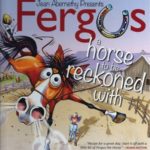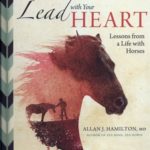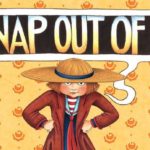I’m not sure what I expected when Riding Into the Wind: On Horseback out of Patagonia, a Life Journey finally worked its way to the top of my “to-read” list. A travel writer by profession, I did not expect a travel story so real that I could almost feel the dust gritting between my teeth. As a lifelong horsewoman and animal lover, I did not expect a story so moving I would be wiping tears from my eyes.

There are two kinds of travel stories: those that make you want to get on a plane and go experience it for yourself; and those that make you feel as if you have, through a visceral connection to the writer, already experienced it. Riding Into the Wind is one of the latter. I have no desire to follow in the Footes’ footsteps, but I am grateful to them for giving me one helluva ride. (Article continues below)
This book may not appeal to everyone. The story is often sad and frustrating. Animals die, people are rotten, and Mother Nature sucks. But there are also laugh-out-loud passages, wonderful people, beautiful places, and glorious triumphs of the human and animal spirit. If you’re a horse person and/or an adventurer and the first chapter doesn’t pull you in, check your pulse.
Okay, so what is this book that makes me sound like the Footes’ publicity agent? It’s 369 pages, with a hardcover and end papers that make it look like a leather-bound journal of the type the Footes used to record their experiences. The book is illustrated with drawings by daughter Conchita Maria Foote and photos.
The story is the saga of two independent young people who were destined, from birth, to be together. Elly grew up in Sweden with her mother, who moved from job to job. Elly moved from horse to horse, making four-footed friends while shying away from people – until she met Nathan. The son of a Unitarian minister, Nathan was a star football player and student at St. Paul’s Academy, and comfortably carried a double major at Harvard until 1961, when he dropped out to go to Albert Schweitzer College in the Swiss Alps. Elly ended up in the same college.
Disillusioned by the Vietnam War and the assassinations of JFK and his brother Robert, the pair literally and figuratively burned their bridges to travel the world on horseback, squeezing the essence of life out of every single day. Their journey, often scribbled in journal pages by the light of a campfire, is not just a travel story; it is a poignant chronicle of life as seen through the eyes of two intelligent, introspective and socially conscious people very much in love with living and each other.
One reader called this a “Homeric” tale. I fervently agree. After working in the slums of Venezuela and living with gypsies in Spain, Elly and Nate set off from Patagonia with four Argentine Criollo horses and a dog named Chaco, aiming roughly for Alaska. Here’s a taste of the prose distilled from this journey:
Chapter Five: But the Patagonia never leaves you. It isn’t a place, you understand. It is not a destination. You cannot conquer it. You can’t go there and take a tour for the experience.
You want to do that, go to your closest IMAX theater and let them treat you to the current thrills and spills of vicarious living. It will be better than what any tour operator could offer you. Patagonia is about being out there without protection or guidance.
You are alone in a landscape so vast that you go day after day and it does not change, and in that unchanging vastness you marvel how man found the spirit to live, facing the overwhelming evidence of his own smallness. Everything is drawn with such sparse strokes:
Plain.
Sky.
Wind.
Day after day after day you ride, yearning for the moment when you reach the horizon where the plains end.
And then, someday, when you are crowded in and suffocating, you close your eyes and you look into the never-ending horizon of the Patagonia and let the wind whip your face and the cold penetrate you and you let yourself imagine how it is to see a gaucho come towards you on the horizon and how it is to have the wind bring you the faint aroma of calafate burning and of ribs cooking and how it is to arrive to a shack tucked in a hollow and to know that you are welcome because you are human and there are so very few in this unforgiving land.
And from Chapter 18:
Sixteen horseshoes on cobblestone, our castanets of ringing steel, play along the chalk shoulder of the Camino Real as we rise in graceful bolero and crest another low, rolling hill, the last rolling hill, we now see. On the empty flatlands of Matehuala stretching out below us, the old Camino Real makes one last wistful swirl, then surrenders herself to the monotony of Route 80.
I feel ambushed. Inside me a voice like a slighted lover wails: betrayal! After leading us on, taking us along from ridge tops to arroyo shadows, all the way from Chiapas de Corso, how can you abandon us now to this black slash of a highway!
The hot silence of the plains throws the accusation back in my face: “Shame on you, gringo: you’re going home!”
The words catch a hook at the end of the spinning lure: HOME.
Three times I left. And for the third time now, I become a salmon jumping sand bars to get back to the native pool. My eyes hopscotch across the desert landscape, darting from one clump of mesquite to another as I argue with the blacktop road, with myself.
There is no place back there; we cut all umbilicals.
Right out here, behind a bush, is home!
Why always north, gringo?
Yes, why north?
To find the answer, you’re going to have to read it yourself. Visit www.ridingintothewind.com
Reviewer Dale Leatherman is a travel writer specializing in golf, adventure and the Caribbean. She is the former features editor for POLO magazine, former senior editor at SPUR, and former content director of EquiSearch.com. She is currently content director for DiscoverHorses.com.







